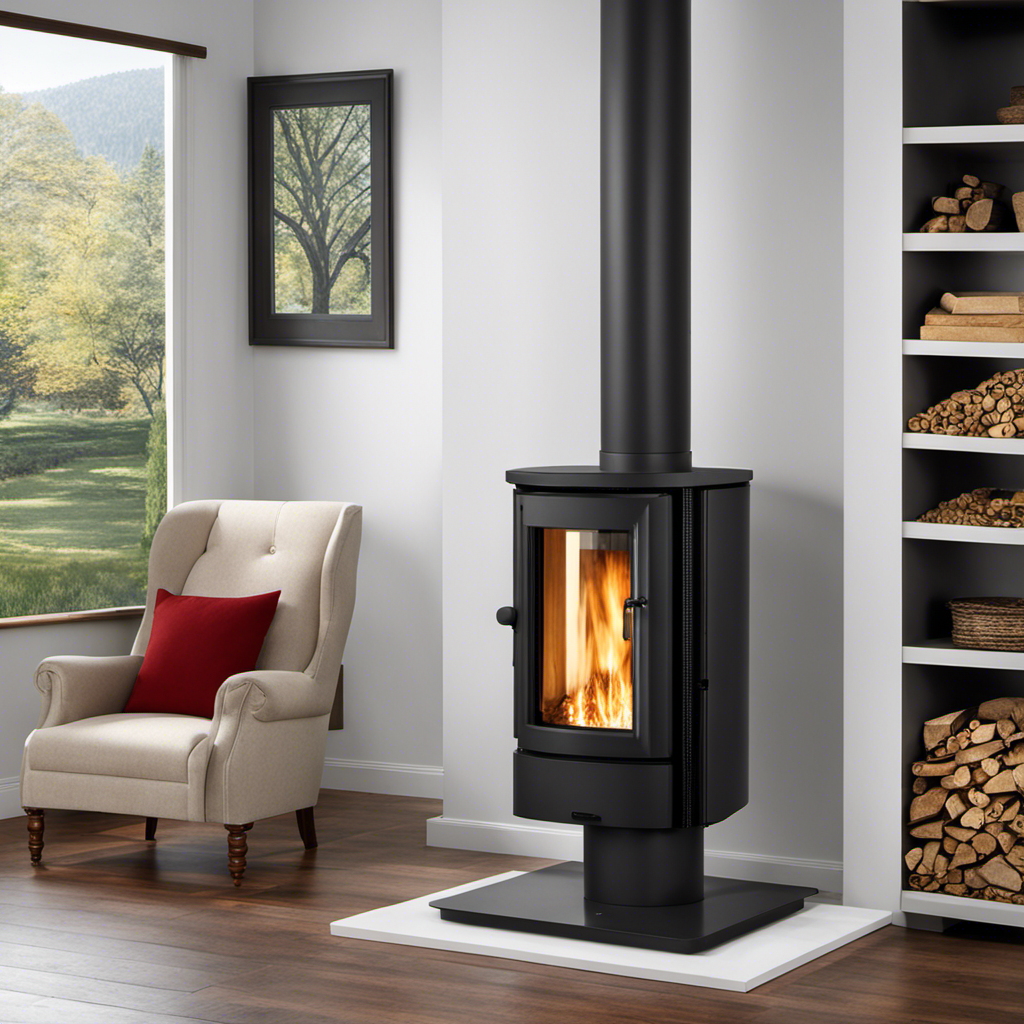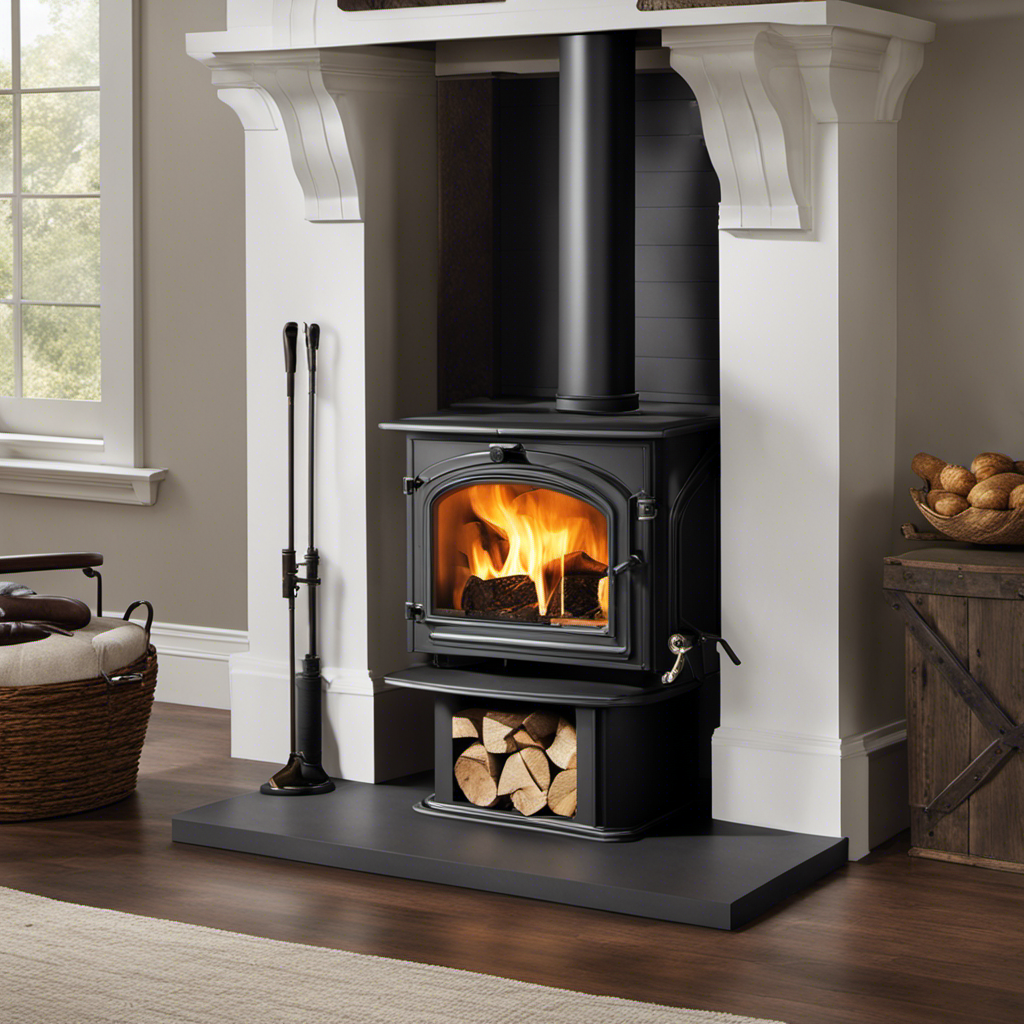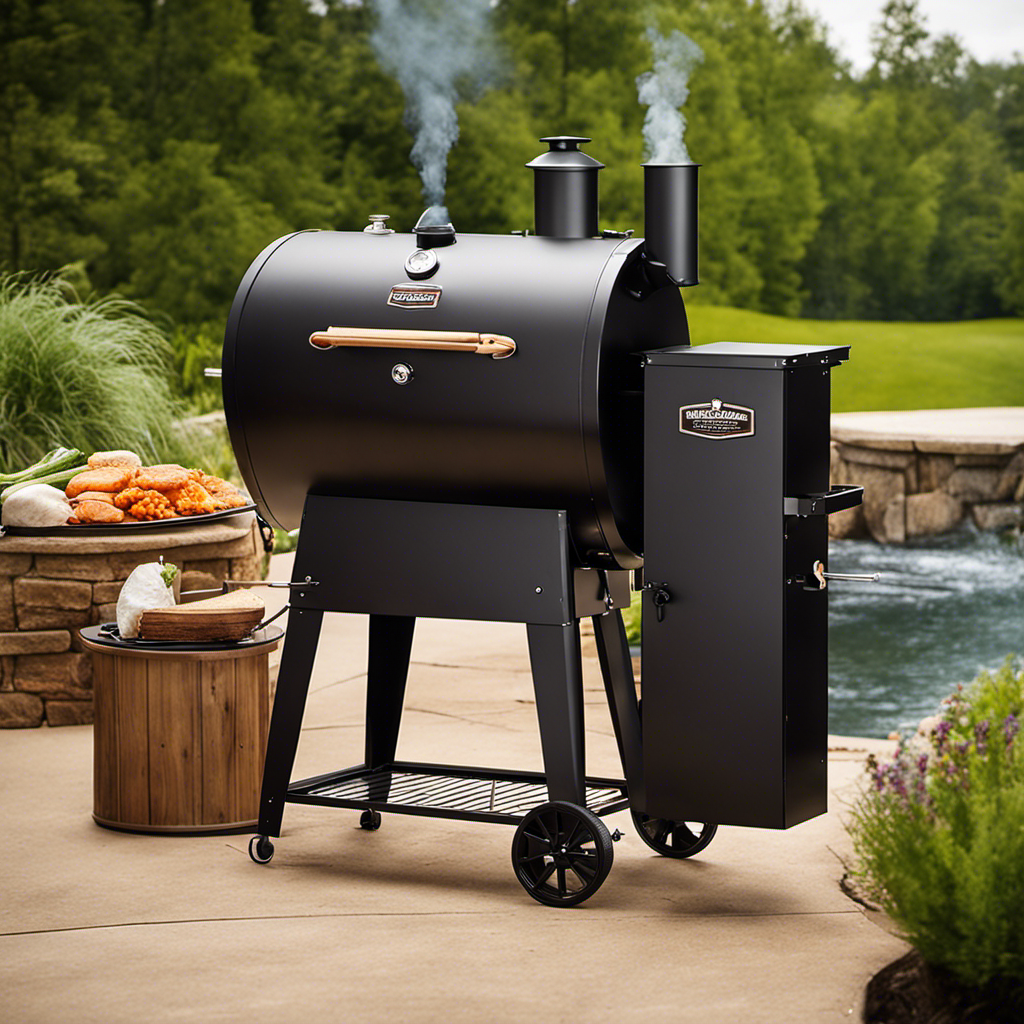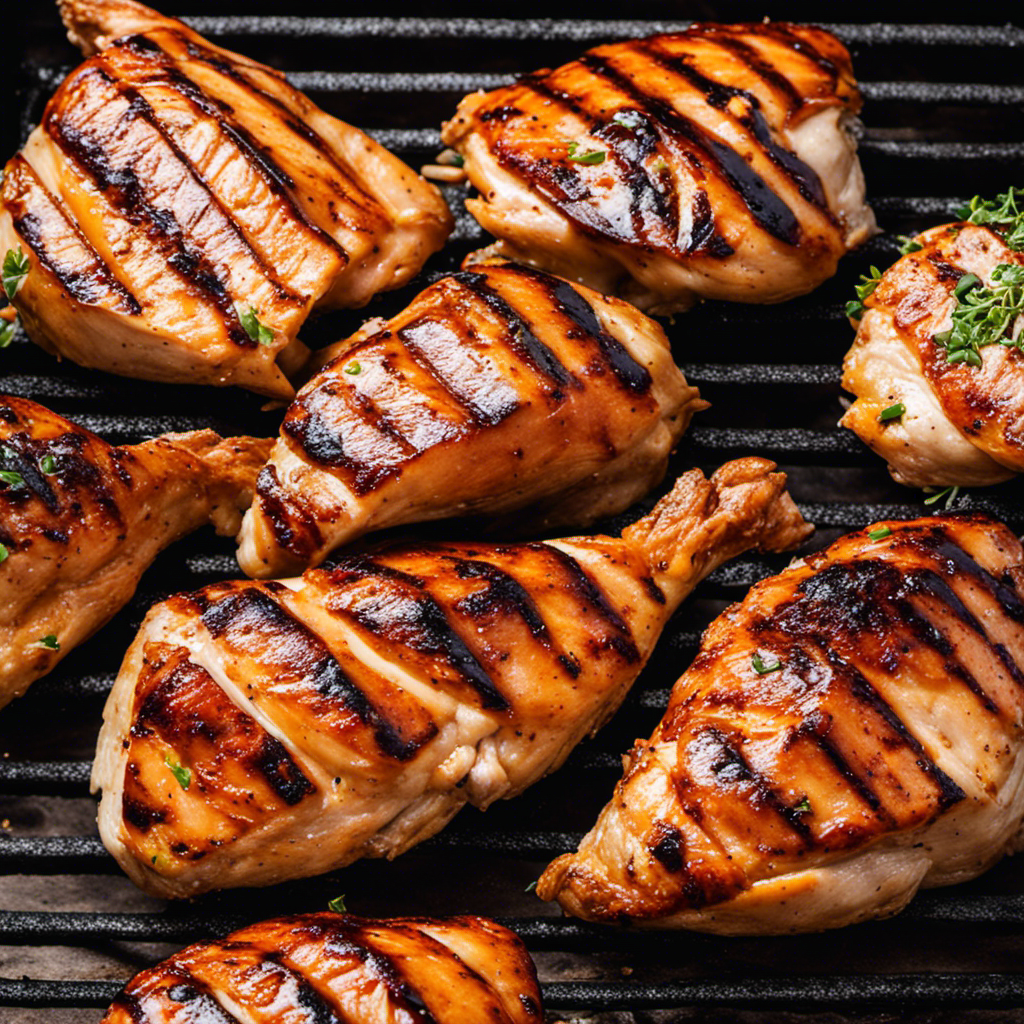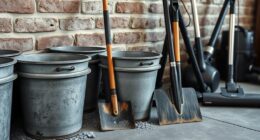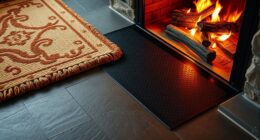I often ponder whether a chimney, initially intended for a wood stove, can also serve to vent a pellet stove. It appears to be a feasible option, yet I had my doubts regarding its effectiveness.
After doing some research, I’m excited to share that it is indeed possible! In this article, we’ll explore the benefits, steps, challenges, and safety considerations of venting a pellet stove through an existing wood stove chimney.
So, let’s dive in and find out if this retrofitting option is right for you.
Key Takeaways
- Venting a pellet stove through an existing wood stove chimney can reduce installation costs and minimize heat loss.
- Pellet stoves have higher efficiency ratings and lower environmental impact compared to wood stoves.
- Pellet stoves require a specific type of chimney called a pellet vent, while wood stoves can use a masonry or prefabricated chimney.
- Venting a pellet stove through an existing chimney may require resizing or modification, proper insulation, and regular cleaning and maintenance to ensure safe operation.
Benefits of Venting a Pellet Stove Through an Existing Wood Stove Chimney
You’ll be happy to know that venting your pellet stove through an existing wood stove chimney has several benefits.
First and foremost, it helps in improving insulation. By utilizing the existing chimney, you can avoid the need for additional venting materials, which reduces installation costs significantly.
This method also eliminates the need for creating a new hole in your home’s exterior, minimizing any potential heat loss.
Furthermore, venting through an existing wood stove chimney ensures that the exhaust gases are efficiently expelled from your home, maintaining indoor air quality.
Understanding the differences between pellet stoves and wood stoves is crucial in making an informed decision about which option suits your heating needs better.
Understanding the Differences Between Pellet Stoves and Wood Stoves
When comparing the efficiency of pellet stoves versus wood stoves, it is important to consider factors such as fuel consumption and heat output.
Pellet stoves are known for their high efficiency, with some models boasting an efficiency rating of over 90%. Wood stoves, on the other hand, tend to have lower efficiency ratings, typically ranging from 60% to 80%.
In terms of installation requirements, chimney compatibility is a key consideration for both pellet stoves and wood stoves. Pellet stoves require a specific type of chimney, known as a pellet vent, which is designed to handle the exhaust gases produced by the stove.
Wood stoves, on the other hand, can be vented through a traditional masonry chimney or a prefabricated chimney system.
Efficiency Comparison: Pellet Vs. Wood
To compare the efficiency of pellet stoves versus wood stoves, you should consider factors such as fuel consumption and heat output. Pellet stoves offer several benefits over traditional wood stoves. They are highly efficient and have a higher heat output, which means they can warm up a room faster and maintain a consistent temperature. Additionally, pellet stoves produce less smoke and particulate matter, resulting in a reduced environmental impact compared to wood stoves. To illustrate this comparison, consider the following table:
| Factor | Pellet Stoves | Wood Stoves |
|---|---|---|
| Fuel Consumption | Low | High |
| Heat Output | High | Moderate |
| Environmental Impact | Low | High |
As you can see, pellet stoves outperform wood stoves in terms of fuel consumption and environmental impact. Now, let’s move on to the installation requirements, specifically chimney compatibility.
Installation Requirements: Chimney Compatibility
If you’re considering installing a pellet stove, it’s important to ensure that your chimney is compatible with the venting requirements.
Chimney installation for a pellet stove differs from that of a regular wood stove, as there are specific venting regulations that must be adhered to.
The first thing to check is the size of your chimney flue. A pellet stove requires a chimney with a minimum diameter of 3 inches, while a wood stove usually requires a larger diameter.
Additionally, the chimney must be in good condition, free from any blockages or damage.
It’s also important to check if your chimney has a liner, as this may need to be replaced or modified to meet the venting regulations for a pellet stove.
Ensuring proper venting for a pellet stove in a wood stove chimney involves a few steps to guarantee safe and efficient operation.
Steps to Ensure Proper Venting for a Pellet Stove in a Wood Stove Chimney
Before installing a pellet stove in a wood stove chimney, make sure to follow these steps to ensure proper venting.
First, consider the venting options available for your pellet stove. There are two main types: direct venting and venting through an existing chimney.
If you choose to vent through an existing chimney, the installation process is slightly different. Start by inspecting the chimney thoroughly to ensure it is in good condition and meets the necessary requirements for pellet stove venting.
Next, clean the chimney thoroughly to remove any debris or creosote buildup. Install a stainless steel liner inside the chimney to create a proper venting system for the pellet stove.
Finally, connect the pellet stove to the liner using the appropriate adapter. By following these steps, you can ensure that your pellet stove is properly vented through the wood stove chimney.
When venting a pellet stove through an existing chimney, there are common challenges that may arise.
Common Challenges When Venting a Pellet Stove Through an Existing Chimney
When venting a pellet stove through an existing wood stove chimney, there are some common challenges that may arise. These challenges can be related to chimney compatibility and may require additional steps to ensure proper venting. Here are some of the venting challenges you may encounter:
-
Size Compatibility: The size of the wood stove chimney may not be suitable for a pellet stove. It may be necessary to resize or modify the chimney to accommodate the different venting requirements of a pellet stove.
-
Insulation: Pellet stoves require proper insulation to maintain optimal efficiency. The existing chimney may lack the necessary insulation, which can result in heat loss and reduced performance.
-
Drafting Issues: Pellet stoves rely on a consistent draft for proper combustion. If the existing chimney does not provide sufficient draft, it may need to be modified or equipped with a draft inducer to ensure proper venting.
-
Cleaning and Maintenance: Wood stove chimneys are designed to handle the byproducts of burning wood, which can be different from those produced by pellet stoves. Regular cleaning and maintenance may be necessary to prevent buildup and ensure safe and efficient operation.
Transitioning into the subsequent section about safety considerations when using a wood stove chimney for a pellet stove, it is important to be aware of potential risks and take necessary precautions.
Safety Considerations When Using a Wood Stove Chimney for a Pellet Stove
To ensure your safety when using a wood stove chimney for venting a pellet stove, it is crucial to be aware of potential risks and take necessary precautions. Improper installation can pose serious dangers and result in potential chimney damage. One of the main risks is the inadequate clearance between the pellet stove flue and the existing chimney walls. This can lead to heat transfer and potential overheating, causing damage to the chimney structure.
Another risk is the accumulation of creosote in the chimney, which can ignite and cause a chimney fire. To avoid these risks, it is important to consult with a professional and ensure proper installation and inspection of the chimney system.
By taking these precautions, you can safely and efficiently vent your pellet stove through a wood stove chimney.
When it comes to venting a pellet stove through a wood stove chimney, there are several tips for improving efficiency.
Tips for Improving Efficiency When Venting a Pellet Stove Through a Wood Stove Chimney
When considering venting a pellet stove through a wood stove chimney, there are several chimney compatibility considerations to keep in mind.
These include checking the size and condition of the chimney, ensuring proper clearance from combustible materials, and verifying that the chimney is designed to handle the exhaust temperature of a pellet stove.
Additionally, it is crucial to follow safety precautions when venting, such as installing a proper chimney cap, ensuring a secure connection between the stove and chimney, and regularly inspecting and cleaning the chimney to prevent any blockages or buildup that could lead to a potential fire hazard.
Chimney Compatibility Considerations
Although a pellet stove can be vented through a chimney where a regular wood stove was, it is important to consider chimney compatibility. When it comes to chimney installation for a pellet stove, there are a few key factors to keep in mind.
First, you need to ensure that the chimney is in good condition and meets the necessary safety requirements. Additionally, the size and type of the chimney should be compatible with the pellet stove’s venting options. This includes considering the diameter of the flue liner and the type of chimney cap or termination kit that is needed.
By ensuring that the chimney is compatible with the pellet stove, you can avoid potential issues and maximize the efficiency of your heating system.
Moving on to safety precautions when venting…
Safety Precautions When Venting
Make sure you check for any obstructions or blockages in the venting system before starting the pellet stove.
Venting alternatives for pellet stoves in urban areas are important to consider due to the environmental impact of pellet stove venting options. When it comes to venting a pellet stove in an urban area, there are several alternatives to consider. These alternatives include direct venting, power venting, and vent-free options.
Each option has its own advantages and disadvantages, which can impact the overall performance and efficiency of the pellet stove. It is crucial to choose the right venting option that not only meets your needs but also minimizes the impact on the environment.
Transitioning into the subsequent section about important factors to consider before retrofitting a wood stove chimney for a pellet stove, it is essential to assess the compatibility and condition of the existing chimney.
Important Factors to Consider Before Retrofitting a Wood Stove Chimney for a Pellet Stove
Before retrofitting your wood stove chimney for a pellet stove, there are important factors to consider. Venting challenges and maintenance requirements play a crucial role in the decision-making process.
One major challenge is ensuring that the wood stove chimney is compatible with the pellet stove’s venting system. Pellet stoves require a specific type of venting, such as a pellet vent or a flexible stainless-steel liner. It is essential to assess whether your existing chimney can accommodate these requirements.
Additionally, maintenance requirements for a pellet stove vented through a wood stove chimney differ from those of a traditional wood stove. Regular cleaning of the chimney and venting system is necessary to prevent the build-up of creosote and ensure proper airflow. Proper maintenance and cleaning are vital for the safe and efficient operation of your pellet stove.
Maintenance and Cleaning Requirements for a Pellet Stove Vented Through a Wood Stove Chimney
To ensure the safe and efficient operation of your pellet stove, you’ll need to regularly clean and maintain the venting system in your wood stove chimney. Proper maintenance and cleaning procedures are crucial to prevent any blockages or buildup that could lead to poor performance or even dangerous situations. Here are some key maintenance requirements and cleaning procedures to keep in mind:
| Maintenance Requirements | Cleaning Procedures |
|---|---|
| Inspect the chimney annually | Remove any debris or soot buildup |
| Check for any cracks or damage | Use a chimney brush to clean the flue |
| Ensure proper airflow and ventilation | Clear any obstructions or nests |
| Replace any worn-out components | Clean the chimney cap and spark arrestor |
| Regularly clean the ashtray and combustion chamber | Vacuum or sweep the surrounding area |
Following these maintenance requirements and cleaning procedures will help prolong the lifespan of your pellet stove and ensure its optimal performance. Remember to always consult your manufacturer’s guidelines for specific instructions.
Frequently Asked Questions
What Are the Benefits of Venting a Pellet Stove Through an Existing Wood Stove Chimney?
The benefits of venting a pellet stove through an existing wood stove chimney include cost savings, as no new venting system needs to be installed, and convenience, as the existing chimney can be utilized. Additionally, pellet stoves are more efficient and environmentally friendly compared to wood stoves.
What Are the Differences Between Pellet Stoves and Wood Stoves?
Pellet stoves and wood stoves have distinct differences. Pellet stoves offer convenience with automated fuel feeding, while wood stoves provide a traditional, cozy ambiance. Both have pros and cons, so it depends on personal preferences.
What Are Some Common Challenges When Venting a Pellet Stove Through an Existing Chimney?
Common challenges when venting a pellet stove through an existing chimney include proper sizing, air flow issues, and potential blockages. Installation tips include inspecting the chimney, using the correct venting materials, and ensuring proper clearances for safety.
What Safety Considerations Should Be Taken Into Account When Using a Wood Stove Chimney for a Pellet Stove?
Safety precautions must always be taken when using a wood stove chimney for a pellet stove. Regular maintenance is necessary to ensure proper ventilation and prevent potential hazards.
How Can Efficiency Be Improved When Venting a Pellet Stove Through a Wood Stove Chimney?
Improving efficiency when venting a pellet stove through a wood stove chimney can be challenging. Proper insulation, installation of an adapter, and regular maintenance are crucial to maximize efficiency and prevent any safety hazards.
Conclusion
In conclusion, venting a pellet stove through an existing wood stove chimney is a game-changer! The benefits are immense, from saving time and money to improving efficiency.
However, it’s crucial to understand the differences between pellet stoves and wood stoves and take the necessary steps to ensure proper venting. While there may be some challenges and safety considerations, the rewards are well worth it.
So, go ahead and retrofit that chimney for your pellet stove and experience a whole new level of warmth and comfort! Don’t miss out on this incredible opportunity!
Logan’s affair with adventure began in childhood. He hailed from a small town where vast forests bordered one side and endless shores stretched on the other. His days were spent exploring uncharted woods, climbing tall trees, or listening to the tales of old sailors. This early immersion in a world brimming with stories and mysteries became the foundation of his passion for writing.

